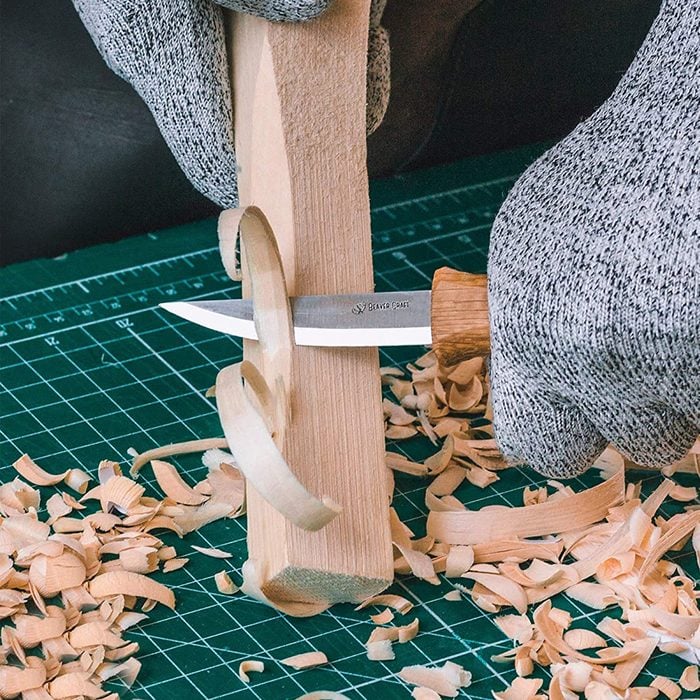For novice woodcarvers, investing in the right woodcarving tools makes those first projects more enjoyable. Here are seven tools to get you started.
Everything You Need To Know About Woodcarving Tools
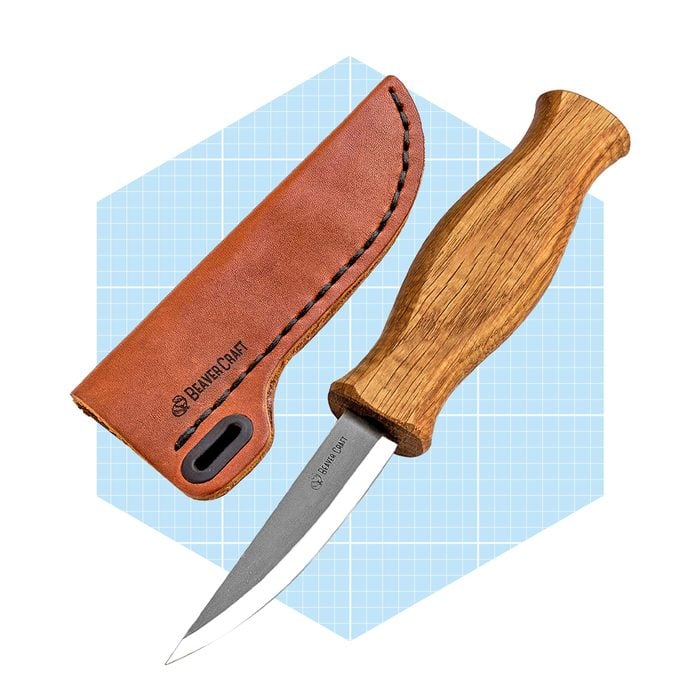
Whittling Knife
Whittling is a woodcarving technique involving slicing away thin shavings to form the desired shape. It’s one of the easiest to master.
Before investing in a slew of woodcarving tools, get yourself a good old-fashioned whittling knife. They’re simple and versatile. Some come with sheaths so you can carry them around, ready to start carving the moment you find a promising scrap of wood.
This whittling knife features a medium-sized blade, suitable for lots of projects. It’s reasonably priced, made of quality high-carbon steel and comes with a handy leather sheath.
If you’re looking for a beginner wood carving project, a duck is a great place to start. Follow these steps to learn how to carve a wooden duck.
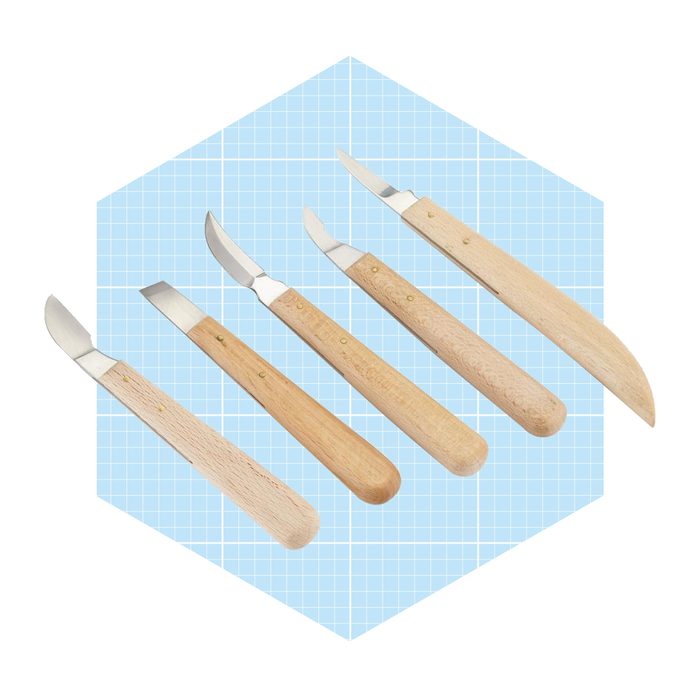
Chip Carving Knife Set
Chip carving involves cutting small, intricate patterns on the surface of wood with the point and edge of a certain type of knife. It takes more time and skill than whittling, and can lead to spectacular results.
As a beginner, it’s important to invest in high-quality woodcarving tools that will last you a lifetime. That’s why I love this five-knife chip carving set. It’s the best I’ve used, with finely forged blades and solid beech wood handles for a great feel.
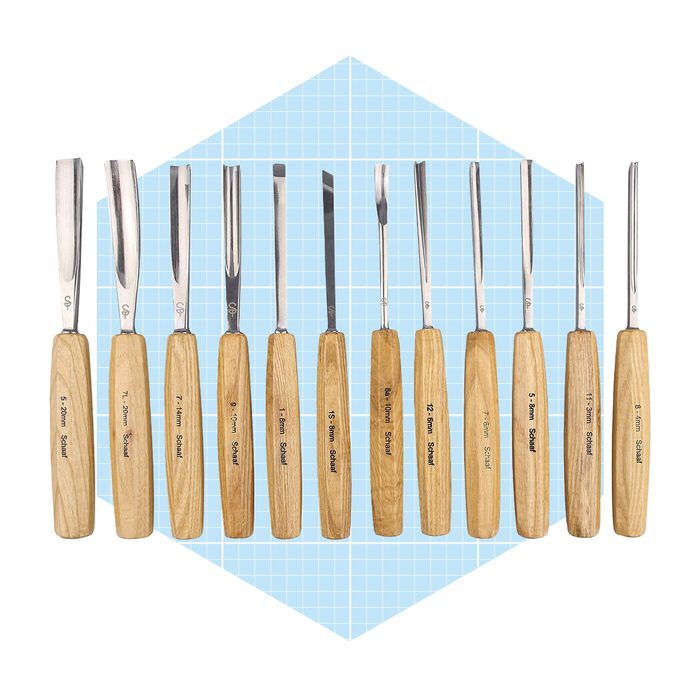
Carving Gouge Set
Carving gouges are chisels with curved blades, good for carving concave shapes or removing slivers without creating raised “shelves” on either side of each stroke. This is a common problem for beginners while whittling or using straight chisels.
Carving gouges can be used with hands only, or with a mallet for more aggressive, less detailed work. At $120, this 12-piece set is fantastic for beginner woodcarvers. It comes with nine gouges of various widths and curvatures, plus a flat chisel, skew chisel and V-tool. (More on those later.)
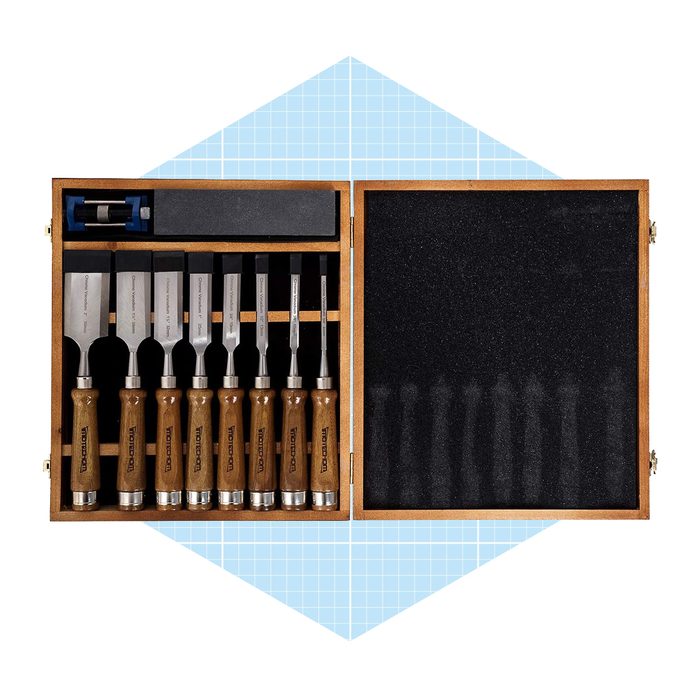
Straight Chisel Set
Straight chisels are a woodcarving mainstay. In my experience, it pays to own a large set.
Straight chisels of various widths and bevel angles are good for shaving off thin slivers, defining straight rectangular parts and carving pockets and openings for interlocking components. I rarely tackle a carving project without reaching for my straight chisel set at some point.
This versatile, well-made 10-piece set comes with a nice box. It contains chisels of various widths, ranging from two inches down to 1/4-inch.
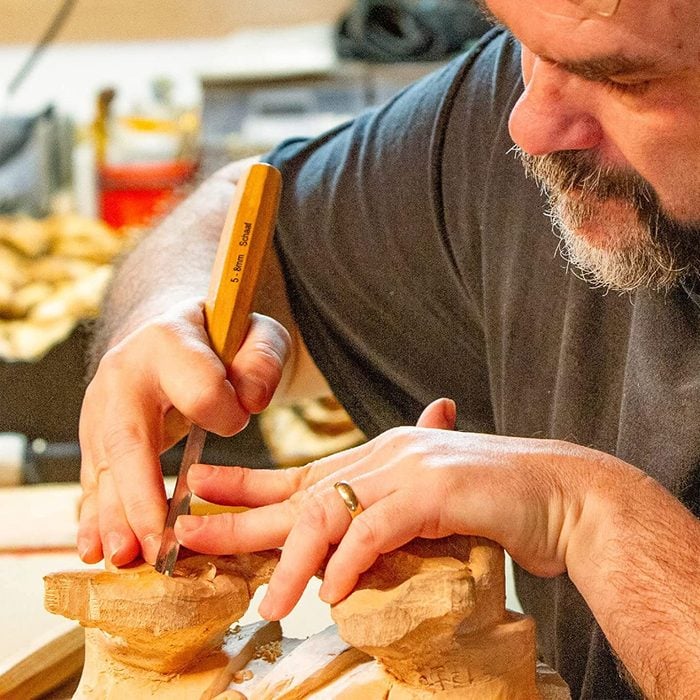
Skew Chisel
Skew chisels are similar to straight chisels, only with slanted blades. They’re usually beveled from both sides rather than just one.
Most often used for woodturning on a lathe, skew chisels are handy for delicately “planing” bits of wood off your project, and can double as an effective chip carving knife.
As a beginner woodcarver, you probably won’t need skew chisels often, which is why the gouge set mentioned above makes sense. It comes with one medium width (8-mm) skew chisel, so when you need one, you have it!
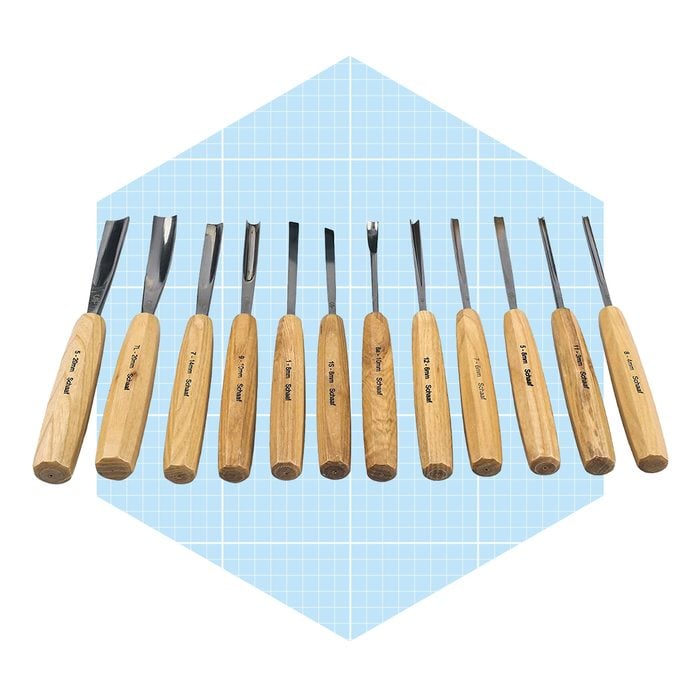
V-Tool
As you might expect, V-tools (aka V-chisels) feature a V-shaped blade. They carve sharp grooves and lines and can be helpful for detail work.
As a beginner woodcarver, you probably won’t be do a lot of detail work right away. So the medium-sized V-tool included in this kit mentioned above is more than enough to get you started.
Advanced woodworkers often own extensive sets of V-tools, ranging greatly in size and blade shape. If you get to that stage, feel free to invest accordingly. Personally, I find one sharp V-tool is almost always enough for basic carving projects.
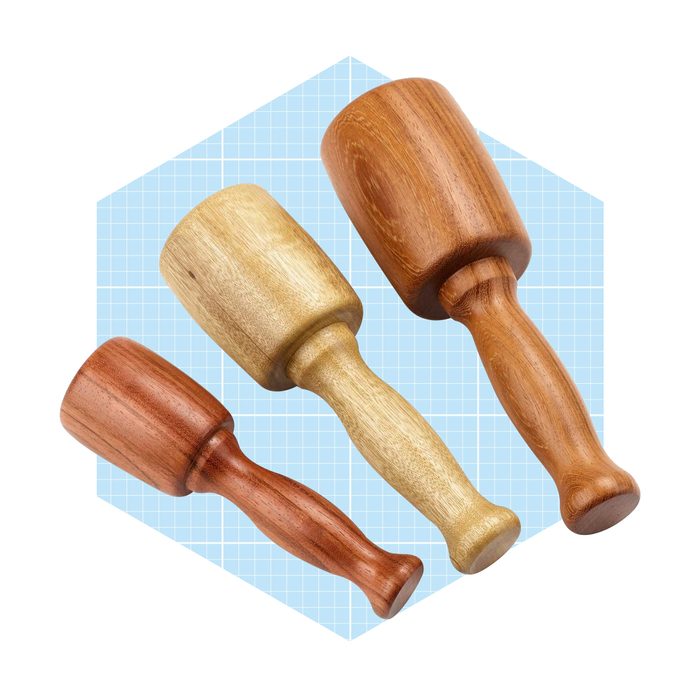
Carving Mallet
Roughly half the carving I do involves nothing more than my hands and a sharp-edged woodcarving tool. The other half requires a mallet, too.
Mallets are cylindrical tools used to pound the butt-end of chisels and gouges when carving aggressively. The force removes wood faster than hand pressure alone. I’ve tried a good many mallets in my time, but this hardwood beauty from Lee Valley is by far my favorite. It’s fairly light and feels great to hold and swing.





















